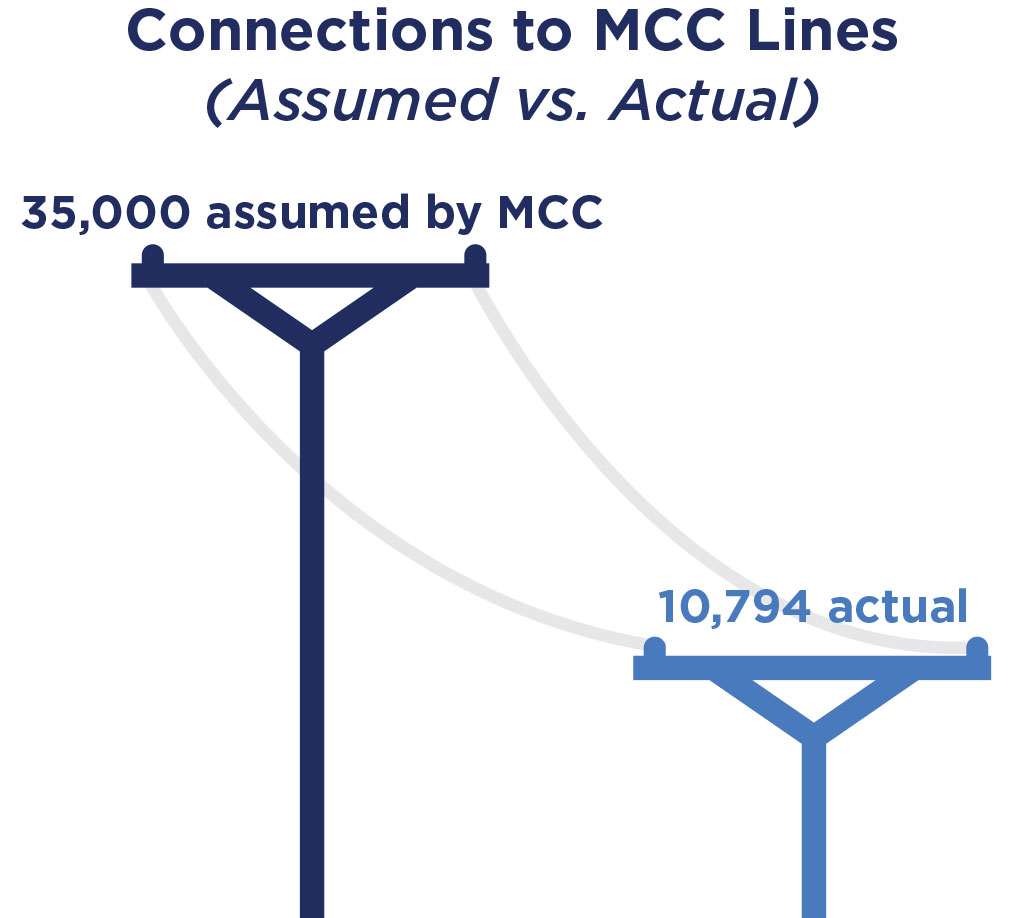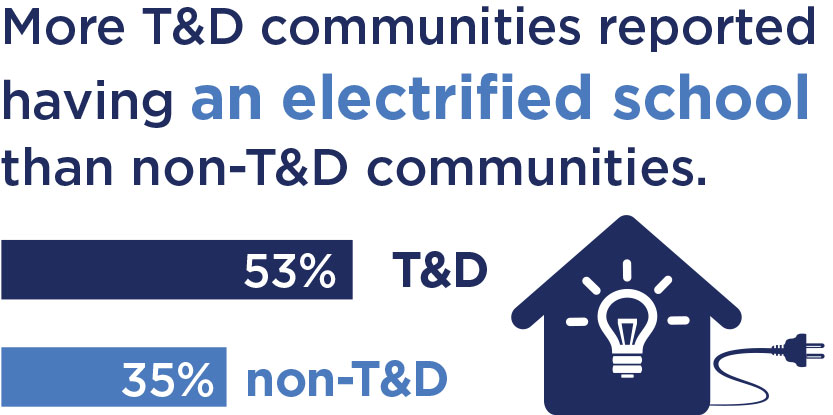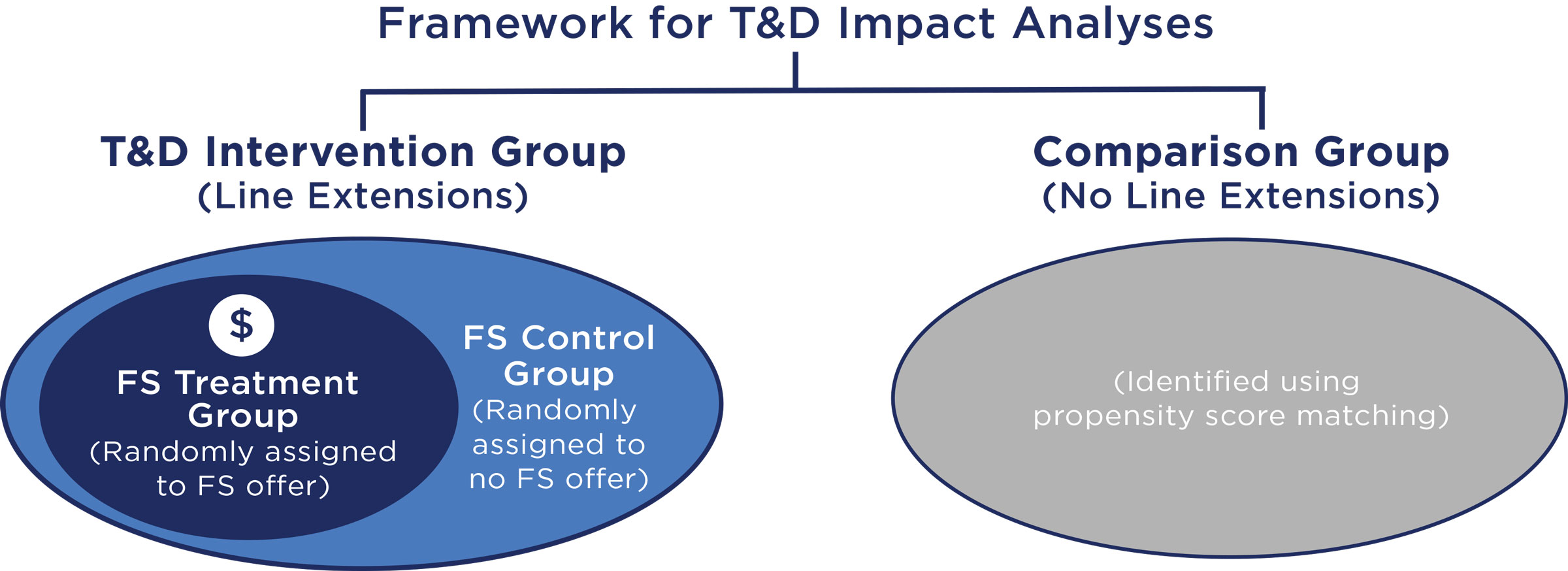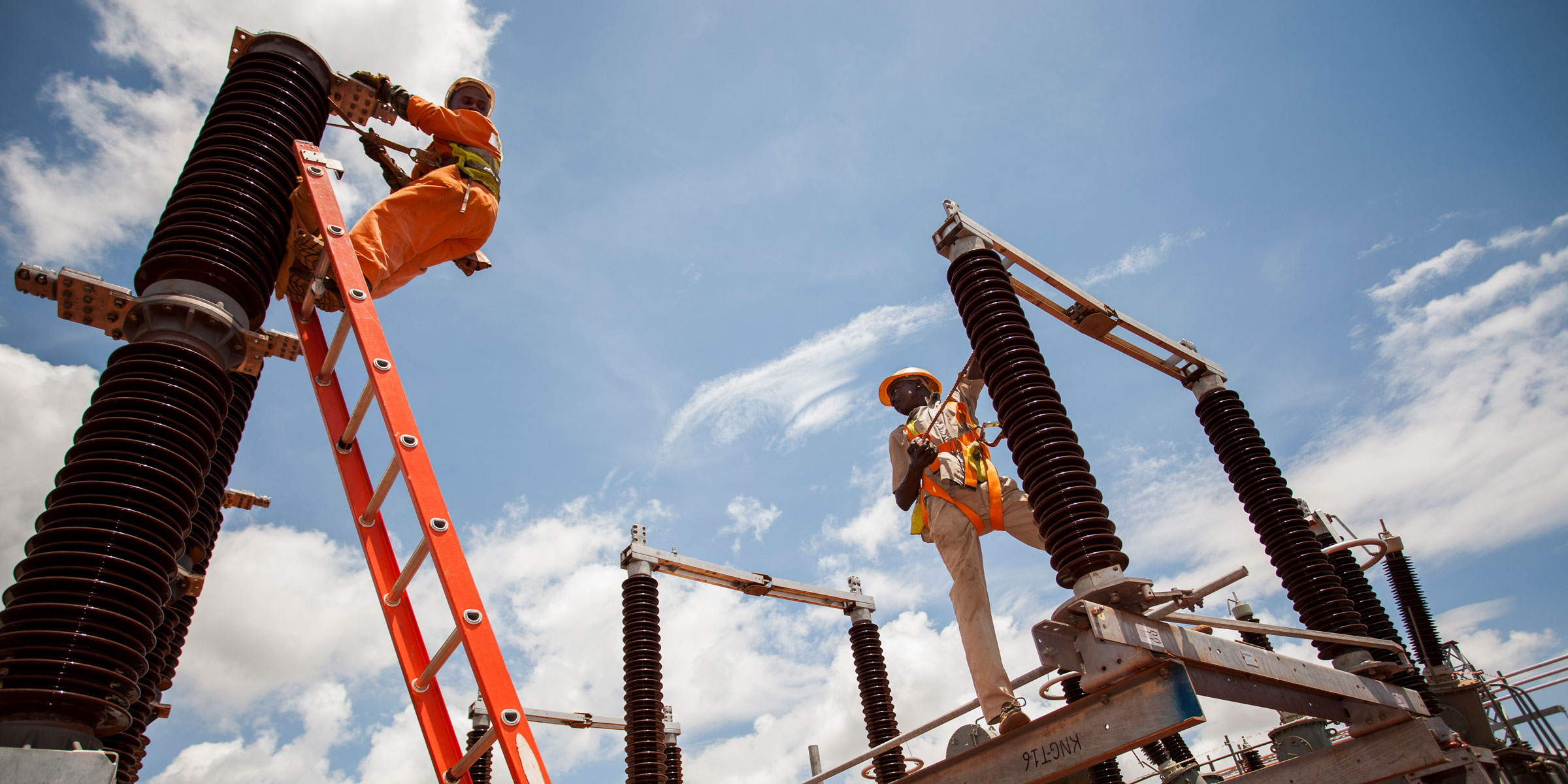Program Overview
MCC’s $694.5 million Tanzania Compact (2008-2013) funded the $199.5 million Energy Sector Project, which included the $124 million Distribution Systems Rehabilitation and Extension (T&D) Activity that extended power lines to increase electricity access. MCC also funded a financing scheme (FS), which offered a connection fee subsidy in some communities to spur grid connections. The T&D Activity theorized that improved access to and sustained use of lower-cost electricity would produce long-term savings and growth for grid-connected customers in 178 communities across seven regions of Tanzania.
Please read the translated evaluation brief.
Key Findings
Grid Connections and Energy Use
- Two-to-three years after the power lines were energized, less than one third of the target number of new customers had connected to the lines. Offering the subsidies increased connection rates by 13 percentage points in communities that received both the subsidies and new lines vs. communities that only received the new lines. However, even if the subsidy was available to all, the connection target still would not have been met.
- The line extensions had no clear impacts on the overall amount of energy used by households. However, the amount of energy consumed via grid electricity increased (by 33 percent in the subsidy group), and the ownership of electrical appliances increased relative to comparison communities.
Health, Education, and Well-Being
- The T&D Activity expected electrification to reduce dirty fuel use and improve home air quality, but the evaluation did not find impacts on the type of fuel used or health outcomes.
- Line extensions increased the likelihood of attending a school with electricity, versus comparison communities. The evaluation found no impact on the time children spent studying at night.
Business and Economic Well-Being
- Increasing the value added of businesses was an objective of the Energy Sector Project, but the T&D Activity had limited impacts on business activity.
- The line extensions did not impact overall consumption or income, but the subsidy offer had a small impact on total per capita daily consumption, relative to communities that only received the new lines.
Evaluation Questions
The final impact evaluation was designed to assess the average impacts of providing communities with new electricity distribution lines on household-level outcomes. It also tested the additional impact of offering a connection fee subsidy among a small group of pilot communities through the FS. Lastly, the evaluation analysis explored the household impacts of actually connecting to the electricity grid, which was an additional step that households and businesses had to take to make use of the infrastructure that was financed using compact funds. However, these findings are not highlighted in this brief because they only reflect the potential, rather than actual, results of MCC’s investment. The evaluation sought to answer the following questions:- 1 What are the impacts on energy use, economic activity, and health and safety in communities selected to receive new electricity lines through the T&D Activity?
- 2 What are the impacts of being in communities selected to receive low-cost connections to the electric grid through the FS?
Detailed Findings
These findings are drawn from two sets of analyses. The first analysis is for the T&D Activity as a whole and compares outcomes in treatment communities that received the new lines to outcomes in similarly matched comparison communities that did not. The second analysis draws from the FS in which connection subsidies were offered to a randomly selected sub-set of communities within the previously described treatment communities. The second analysis compares outcomes in T&D treatment communities that received the connection subsidy offer and T&D treatment communities that did not.
Grid Connections
In order for the program’s economic logic to hold, households and businesses needed to make the choice to connect to the new power lines. MCC’s investment expanded access to the electrical grid in program areas, with a connection rate of 21 percent in line extension communities vs. 11 percent in comparison communities. Similarly, the low-cost connection subsidies boosted access with a connection rate of 31 percent in communities that received the offer vs. 18 percent in comparison communities that did not, and only got new lines. Although these effects were positive, connection rates were much lower than MCC’s original projections. MCC had expected that households in the targeted communities would connect immediately upon installation of the lines. However, it is estimated that the program achieved only 10,794 of the 35,000 targeted number of connections at the time of the endline survey, at least 20 months after construction finished on the new lines. Without significant uptake of electricity connections and, therefore, use of electricity, the likelihood of the program having measurable household-level economic impacts is diminished.Energy Use
The lack of impacts on the overall quantity of energy used by households in program areas is at least partially explained by the substitution of grid electricity for electricity from non-grid sources such as generators and batteries. This substitution may have allowed households to use energy more efficiently.
Health and Well-being
According to the program logic, electrification would reduce liquid and solid fuel use, which, in turn, would improve air quality in the home. However, the evaluation did not find that the line extensions had impacts on fuel consumption. It also found no clear impacts on health outcomes.The program had large positive impacts on perceived safety, which respondents said was 20 percentage points higher in communities where line extensions occurred relative to comparison communities.

Education
The line extensions increased the number of schools and businesses with a connection to the grid, with 53 percent of program communities reporting having an electrified school, vs. 35 percent of comparison communities.Business
Line extensions resulted in a two percentage point (or 33 percent) increase in the likelihood of a household having an income-generating activity (IGA) that used electricity, relative to comparison households. Neither the line extensions nor the low-cost connection offers had clear impacts on the fraction of households operating any IGA or the fraction having a household member with a paid job.Economic Well-Being
The line extensions had no clear impact on annual non-electric consumption or annual income. This is likely because the program resulted in far fewer new connections than anticipated, and connecting to the grid and switching from other energy sources to electricity was the pathway through which income gains were expected to be achieved. However, community survey respondents indicated that the addition of line extensions resulted in a 34 percent increase in the price of residential land.The low-cost connections reduced the percent of households living on less than $1 per day (75 percent for the FS control communities and 69 percent for the FS treatment communities) as well as the percent of households living on less than $2 per day (93 percent for the control communities and 90 percent for the treatment communities).
MCC Learning
- The cost of extending the grid was large in absolute terms as well as in comparison to projected economic benefits. However, the evaluation results demonstrated that subsidizing grid connection costs helped increase the connection rate in pilot communities. As such, this could be a way to increase the economic viability of future grid infrastructure investments if offered more widely.
- It is critical to investigate causal links and assumptions in the proposed program logic during program design (e.g. the readiness of households to connect to the power grid and to switch from liquid and solid fuel). Household data on these issues can inform benefit projections and help target program design appropriately.
- Poor-quality utility data on electric connections resulted in unideal timing of the final round of evaluation data collection. MCC should implement Data Quality Reviews when there is sufficient data to assess and at a point when outcomes are expected to manifest, in cases when administrative data is used to inform evaluation decisions.

Electrical worker servicing an MCC-funded substation
Evaluation Methods
This impact evaluation employed two methodologies, including a matched comparison with difference-in-differences and a randomized controlled trial, to assess the impact of two different interventions (see diagram below). The framework for this analysis is summarized in the figure below.
FS Analysis: The FS was intended to increase the uptake of grid connections, which, if successful, would increase the likelihood of achieving impacts on economic outcomes. Mathematica used random assignment to estimate the impacts of being in a community that was offered low-cost connections through the FS. The evaluation compared the outcomes of 632 households in 27 communities selected for T&D and FS versus 3,385 households in 163 communities selected for only T&D. The FS analysis used data from the baseline and final surveys of households conducted for the T&D analysis. The final surveys provided the FS analysis an exposure period of 14-24 months.
2019-002-2224


